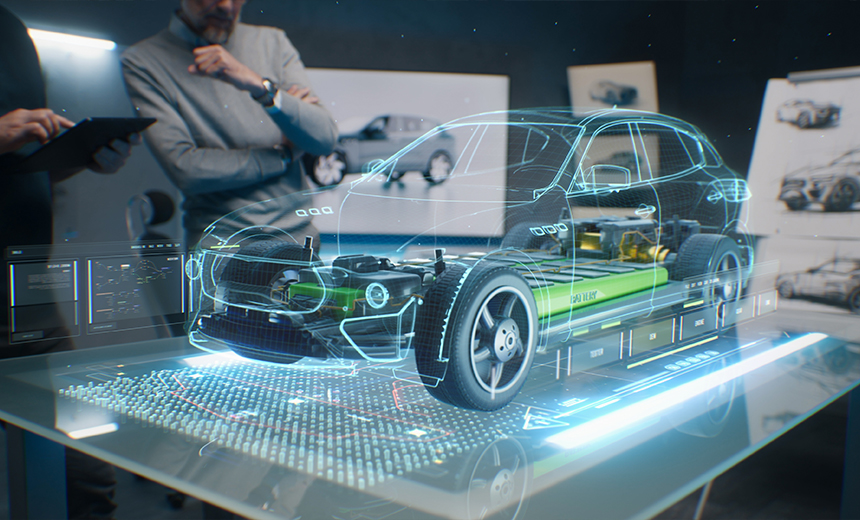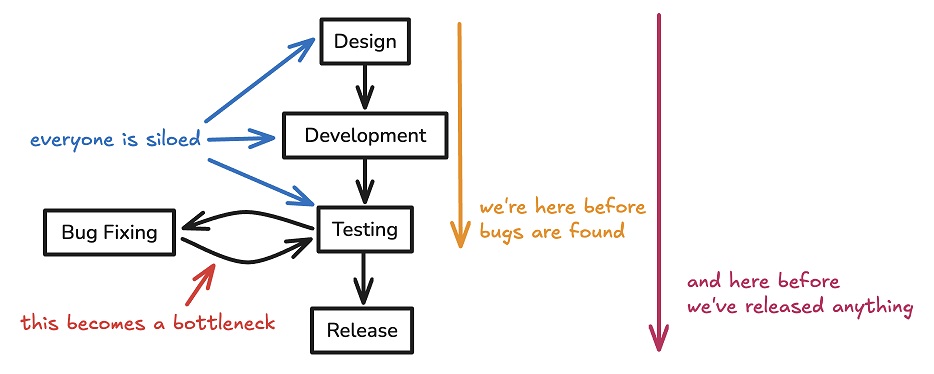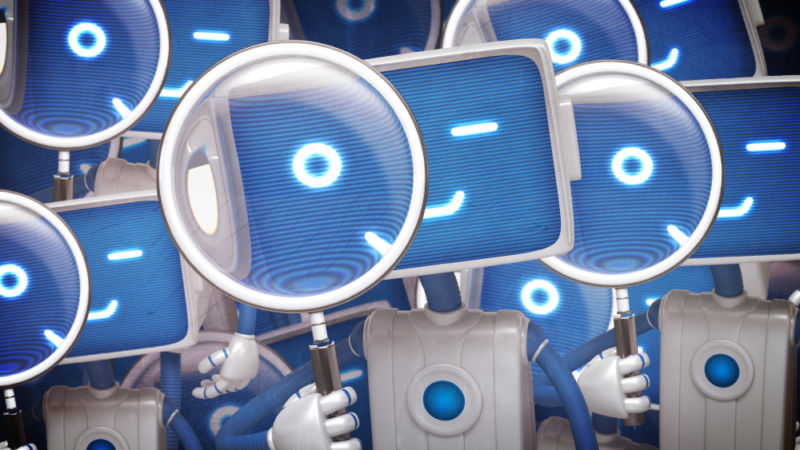What Does the Car of the Future Look Like?

Enabled with IoT, the vehicles stay in sync with their environments. The
ConnectedDrive feature, for example, enables predictive maintenance by using IoT
sensors to monitor vehicle health and performance in real time and notify
drivers about upcoming maintenance needs. IoT also paves the way for
vehicle-to-infrastructure, or V2X, communication, which enables BMW cars to
interact with traffic lights, road signs and other vehicles. But a smart car is
more than just internet-connected. ... The next leap in sensor technology is
quantum sensing. Image generation systems based on infrared, ultrasound and
radar are already in use. But with multisensory systems, BMW vehicles will not
only be able to detect potential hazards more accurately but also predict and
prevent damage - a capability crucial for automated and autonomous driving
systems. These sensors will allow vehicles to "feel" their surroundings,
enabling more refined surface control and the ability to perform complex tasks,
such as the automated assembly of intricate components. Predictive maintenance,
powered by multisensory input, will serve as an early warning system in
production, reducing downtime.
NIST Cybersecurity Framework (CSF) and CTEM – Better Together

CSF's core functions align well with the CTEM approach, which involves
identifying and prioritizing threats, assessing the organization's vulnerability
to those threats, and continuously monitoring for signs of compromise. Adopting
CTEM empowers cybersecurity leaders to significantly mature their organization's
NIST CSF compliance. Prior to CTEM, periodic vulnerability assessments and
penetration testing to find and fix vulnerabilities was considered the gold
standard for threat exposure management. The problem was, of course, that these
methods only offered a snapshot of security posture – one that was often
outdated before it was even analyzed. CTEM has come to change all this. The
program delineates how to achieve continuous insights into the organizational
attack surface, proactively identifying and mitigating vulnerabilities and
exposures before attackers exploit them. To make this happen, CTEM programs
integrate advanced tech like exposure assessment, security validation, automated
security validation, attack surface management, and risk prioritization.
Leveling Up to Responsible AI Through Simulations

This simulation highlighted the challenges and opportunities involved in
embedding responsible AI practices within Agile development environments. The
lessons learned from this exercise are clear: expertise, while essential, must
be balanced with cross-disciplinary collaboration; incentives need to be aligned
with ethical outcomes; and effective communication and documentation are crucial
for ensuring accountability. Moving forward, organizations must prioritize the
development of frameworks and cultures that support responsible AI. This
includes creating opportunities for ongoing education and reflection, fostering
environments where diverse perspectives are valued, and ensuring that all
stakeholders—from engineers to policymakers—are equipped and incentivized to
navigate the complexities of responsible Agile AI development. Simulations like
the one we conducted are a valuable tool in this effort. By providing a
realistic, immersive experience, they help professionals from diverse
backgrounds understand the challenges of responsible AI development and prepare
them to meet these challenges in their own work. As AI continues to evolve and
become increasingly integrated into our lives, the need for responsible
development practices will only grow.
What software supply chain security really means

Upon reflection, the “supply chain” aspect of software supply chain security
suggests the crucial ingredient of an improved definition. Software producers,
like manufacturers, have a supply chain. And software producers, like
manufacturers, require inputs and then perform a manufacturing process to build
a finished product. In other words, a software producer uses components,
developed by third parties and themselves, and technologies to write, build, and
distribute software. A vulnerability or compromise of this chain, whether done
via malicious code or via the exploitation of an unintentional vulnerability, is
what defines software supply chain security. I should mention that a similar,
rival data set maintained by the Atlantic Council uses this broader
definition. I admit to still having one general reservation about this
definition: It can feel like software supply chain security subsumes all of
software security, especially the sub-discipline often called application
security. When a developer writes a buffer overflow in the open source software
library your application depends upon, is that application security? Yep! Is
that also software supply chain security?
Data privacy and security in AI-driven testing

As the technology has become more accepted and widespread, the focus has
shifted from disbelief in its capabilities to a deep concern for how it
handles sensitive data. At Typemock, we’ve adapted to this shift by ensuring
that our AI-driven tools not only deliver powerful testing capabilities but
also prioritize data security at every level. ... While concerns about IP
leakage and data permanence are significant today, there is a growing shift in
how people perceive data sharing. Just as people now share everything online,
often too loosely in my opinion, there is a gradual acceptance of data sharing
in AI-driven contexts, provided it is done securely and transparently.Greater
Awareness and Education: In the future, as people become more educated about
the risks and benefits of AI, the fear surrounding data privacy may diminish.
However, this will also require continued advancements in AI security measures
to maintain trust. Innovative Security Solutions: The evolution of AI
technology will likely bring new security solutions that can better address
concerns about data permanence and IP leakage. These solutions will help
balance the benefits of AI-driven testing with the need for robust data
protection.
QA's Dead: Where Do We Go From Here?

Developers are now the first line of quality control. This is possible through
two initiatives. First, iterative development. Agile methodologies mean teams
now work in short sprints, delivering functional software more frequently.
This allows for continuous testing and feedback, catching issues earlier in
the process. It also means that quality is no longer a final checkpoint but an
ongoing consideration throughout the development cycle. Second, tooling.
Automated testing frameworks, CI/CD pipelines, and code quality tools have
allowed developers to take on more quality control responsibilities without
risking burnout. These tools allow for instant feedback on code quality,
automated testing on every commit, and integration of quality checks into the
development workflow. ... The first opportunity is down the stack, moving into
more technical roles. QA professionals can leverage their quality-focused
mindset to become automation specialists or DevOps engineers. Their expertise
in thorough testing can be crucial in developing robust, reliable automated
test suites. The concept that "flaky tests are worse than no tests" becomes
even more critical when the tests are all that stop an organization from
shipping low-quality code.
Serverless Is Trending Again in Modern Application Development

A better definition has emerged as serverless becomes a path to developer
productivity. The term "serverless" was always a misnomer and, even among end
users and vendors, tended to mean different things depending on product and
use case. Just as the cloud is someone else's computer, serverless is still
someone else's server. Today, things are much clearer. A serverless
application is a software component that runs inside of an environment that
manages the underlying complexity of deployment, runtimes, protocols, and
process isolation so that developers can focus on their code. Enterprise
success stories delivered proven, repeatable use case solutions. The initial
hype around serverless centered around fast development cycles and back-end
use cases where serverless functions acted as the glue between disparate cloud
services. ... Since then, we've seen many more enterprise customers taking
advantage of serverless. An expanded ecosystem of ancillary services drives
emerging use cases. The core use case of serverless remains building
lightweight, short-running ephemeral functions.
New AI standards group wants to make data scraping opt-in

The Dataset Providers Alliance, a trade group formed this summer, wants to
make the AI industry more standardized and fair. To that end, it has just
released a position paper outlining its stances on major AI-related issues.
The alliance is made up of seven AI licensing companies, including music
copyright-management firm Rightsify, Japanese stock-photo marketplace Pixta,
and generative-AI copyright-licensing startup Calliope Networks. ... The DPA
advocates for an opt-in system, meaning that data can be used only after
consent is explicitly given by creators and rights holders. This represents a
significant departure from the way most major AI companies operate. Some have
developed their own opt-out systems, which put the burden on data owners to
pull their work on a case-by-case basis. Others offer no opt-outs whatsoever.
The DPA, which expects members to adhere to its opt-in rule, sees that route
as the far more ethical one. “Artists and creators should be on board,” says
Alex Bestall, CEO of Rightsify and the music-data-licensing company Global
Copyright Exchange, who spearheaded the effort. Bestall sees opt-in as a
pragmatic approach as well as a moral one: “Selling publicly available
datasets is one way to get sued and have no credibility.”
AI potential outweighs deepfake risks only with effective governance: UN

“AI must serve humanity equitably and safely,” Guterres says. “Left unchecked,
the dangers posed by artificial intelligence could have serious implications
for democracy, peace and stability. Yet, AI has the potential to promote and
enhance full and active public participation, equality, security and human
development. To seize these opportunities, it is critical to ensure effective
governance of AI at all levels, including internationally.” ... The flurry of
laws also concern worker protections – which in Hollywood means protecting
actors and voice actors from being replaced with deepfake AI clones. Per AP,
the measure mirrors language in the deal SAG-AFTRA made with movie studios
last December. The state is also to consider imposing penalties on those who
clone the dead without obtaining consent from the deceased’s estate – a
bizarre but very real concern, as late celebrities begin popping up in studio
films. ... If you find yourself suffering from deepfake despair, Siddharth
Gandhi is here to remind you that there are remedies. Writing in ET Edge, the
COO of 1Kosmos for Asia Pacific says strong security is possible by pairing
liveness detection with device-based algorithmic systems that can detect
injection attacks in real-time.
Red Hat delivers AI-optimized Linux platform

RHEL AI helps enterprises get away from the “one model to rule them all”
approach to generative AI, which is not only expensive but can lock
enterprises into a single vendor. There are now open-source large language
models available that rival those available from the commercial vendors in
performance. “And there are smaller models,” Katarki adds, “which are truly
aligned to your specific use cases and your data. They offer much better ROI
and much better overall costs compared to large language models in general.”
And not only the models themselves but the tools needed to train them are also
available from the open-source community. “The open-source ecosystem is really
fueling generative AI, just like Linux and open source powered the cloud
revolution,” Katarki says. In addition to allowing enterprises to run
generative AI on their own hardware, RHEL AI also supports a “bring your own
subscription” for public cloud users. At launch, RHEL AI supports AWS and the
IBM cloud. “We’ll be following that with Azure and GCP in the fourth quarter,”
Katarki says. RHEL AI also has guardrails and agentic AI on its roadmap.
“Guardrails and safety are one of the value-adds of Instruct Lab and RHEL AI,”
he says.
Quote for the day:
"Without continual growth and
progress, such words as improvement, achievement, and success have no
meaning." -- Benjamin Franklin
No comments:
Post a Comment